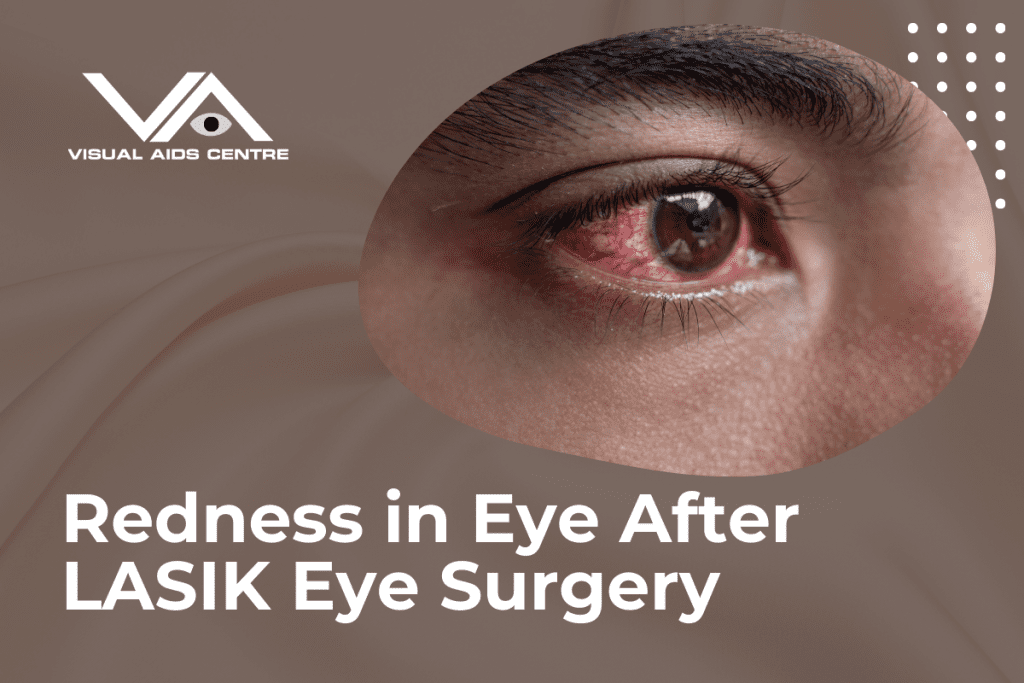Table of Contents
ToggleIs Red Eye Common After LASIK?
Temporary red eye is common after surgery, but safety precautions can be taken before the procedure to reduce it.
During LASIK, the flap comprises a very thick layer of the cornea, and the cornea contour is reshaped. The eye may become red in response to changes in the face’s surface. It is a common reaction to eye surgery, and it is temporary. In our office, however, we take special safety measures and use special pre-surgery drops to reduce redness after the procedure.

Two Common Types Of Red Eye After LASIK
There are two types of red eyes that most patients may have:
White Blood Spots – After LASIK, you may see some blood spots from the white part of the eye. While it may seem confusing, it is just a sign that some blood vessels are broken during the procedure. It is regular, temporary, and does not harm your vision or eyes. Using special drops before surgery to minimize these types of blood vessels. It is rare in our actions for this to happen but remembering it is not a big deal. These go for a week or more.
Red Eye Due to Dry Eye – After LASIK, patients will notice problems with eye moisture for a few months. Dry eye is a common reaction of temporary surgery, and average tear production will begin again after a few weeks/months of recovery. Ongoing problems with dry eye may occur but are very rare and can be treated with due diligence by the patient and the Physician. Chronic dry eye is very rare in modern cultures. Many OTC and prescription drugs help deal with this issue when it arises.
Treatment of Common Red Eye Problems After LASIK
No treatment is needed to get blood stains on the white of the eye. The spots should disappear independently after a week as part of the normal recovery process.
As for the red eye associated with dry eye, patients must use eye drops regularly undergoing surgery. It is true whenever they feel dry, itchy, or irritated. Doctors offer substantial prescription reductions for dry eye syndrome and recommend Omega Three fatty acids orally. It is also helpful to look away from the screen from time to time to restore the desired brightness level and to avoid fans and gaps that blow air into the eyes.
After using your computer or phone for 20 minutes, look away for 20 seconds at a distance of about 20 feet.
It can significantly prevent excessive eye drying and improve comfort when working with screens for long periods. Also, we would like to recommend a sticker that reminds patients to blink while on the computer. Frequent blinking is a common cause of dryness and redness.
Other Causes of Red Eye After LASIK
In addition to the above, patients may get red-eye after LASIK due to post-op infection or inflammation. These are sporadic cases (shallow, even 1%). These issues can be resolved in many instances with prescription eye drops, although additional specialist care may be needed.
What Should I Do If My Red Eye Is Not Progressive?
If you have red-eye after LASIK that lasts more than a few days without improvement, talk to a team member. Consult about the issue as soon as possible is essential to improving your comfort. People are usually red on the white part of their eyeball after the LASIK procedure. The redness is like bruises and will disappear within a few days. About 50 percent of the patient has dry eyes, ensuring good eye health.
Many people consider having LASIK to improve their lifestyle – not to deal with glasses or contact lenses daily. Some want to have LASIK because a big event is coming, like wedding photos, a wedding, a marathon, a big family holiday on the beach, skydiving – all things they would like to focus on wholly without relying on glasses or contacts to see. LASIK can help you to enjoy life to the full. But many people are worried about having red eyes after LASIK – they are concerned about how long they may have red eyes and if it could be a problem.
Why do some people have Red Eyes after LASIK?
Some people may have blood-red splotches in the white of the eye after LASIK. These areas are known as subconjunctival bleeding. It is similar to injury, but because blood stains appear in the white area of the eye, it can cause anxiety.
If subconjunctival bleeding occurs, it will go away independently, but it can last for a few weeks.
We all have a natural reflex to protect our eyes, so we are sensitive to the tools and objects around us.
In Kugler Vision, we use drops that lower this reflex. A professional staff keeps you comfortable throughout the process, so sensitivity does not interfere with your operation or affect your results.
LASIK is a quick and painless procedure. Before the LASIK procedure begins, your eye is closed with an anesthetic. Although you may feel a bit of pressure, real pain is rare. After your procedure, your eyes may be slightly sore for a few hours, but ointment drops and Tylenol or ibuprofen are usually enough to relieve discomfort.









